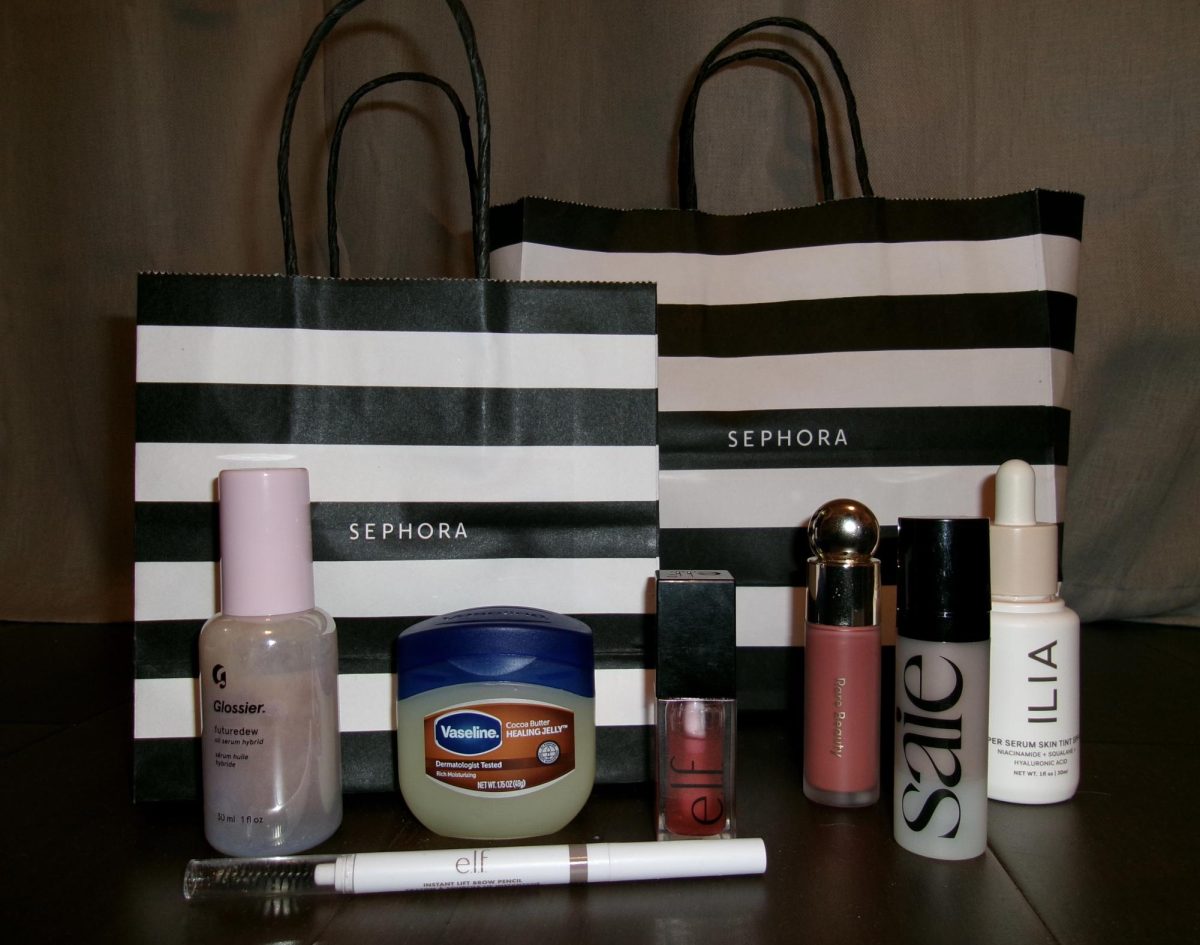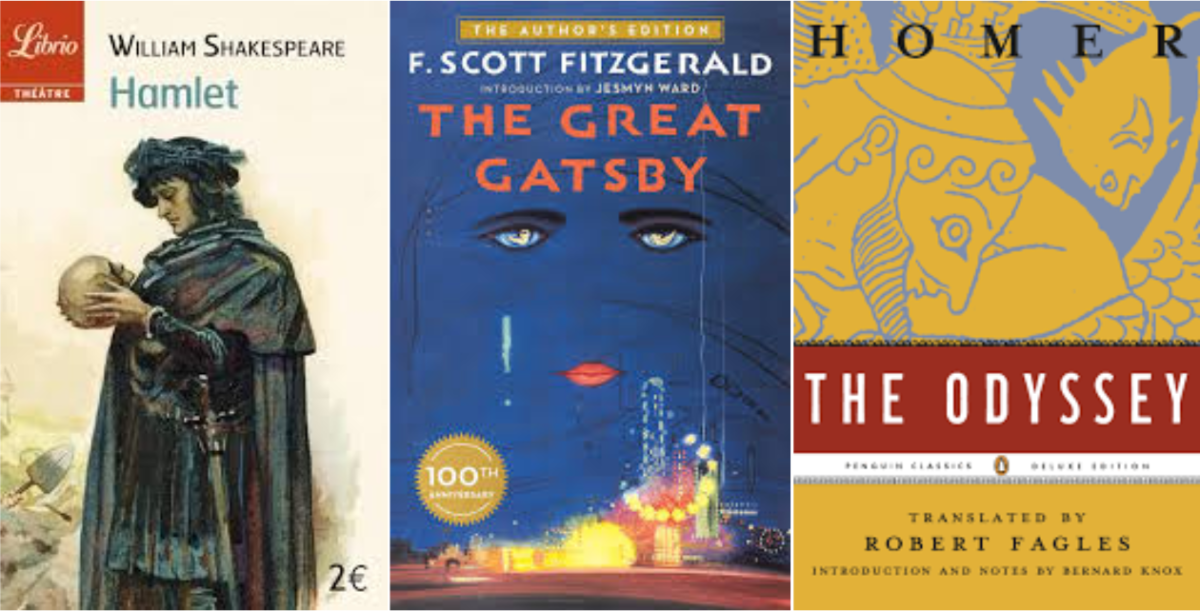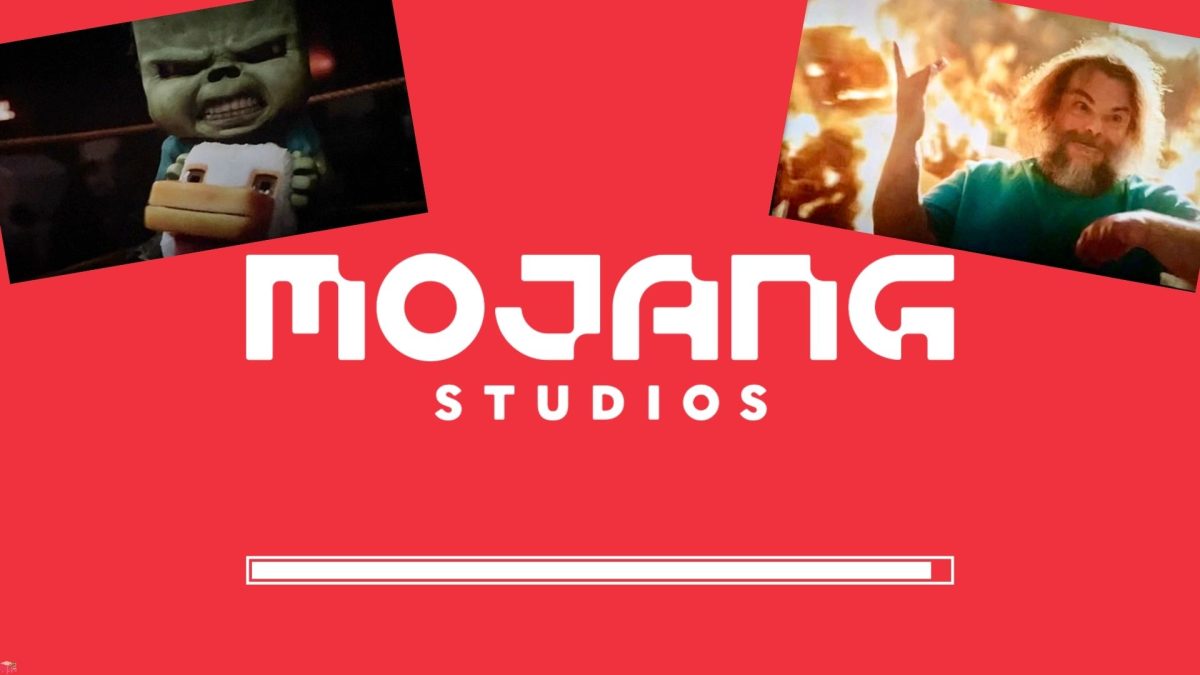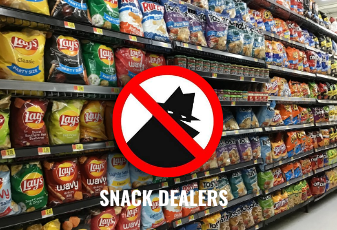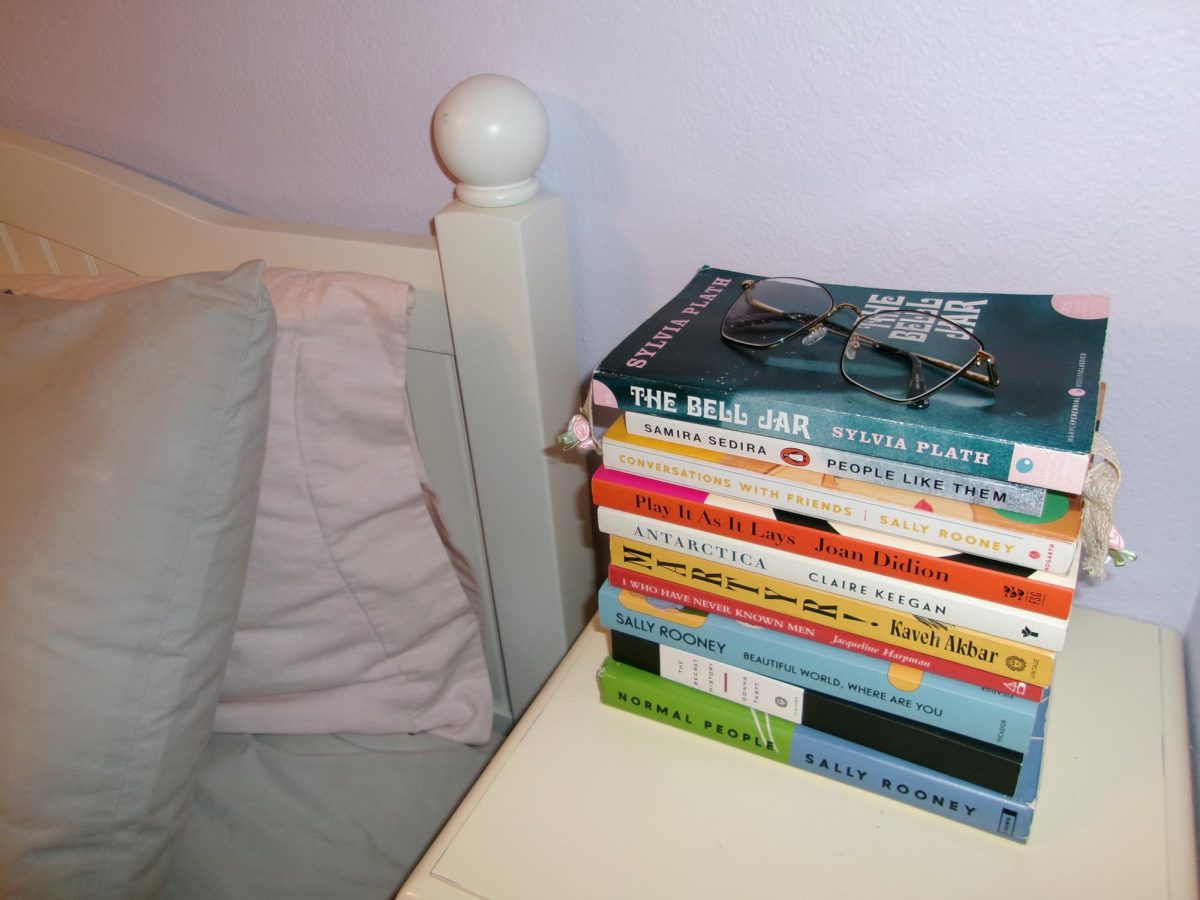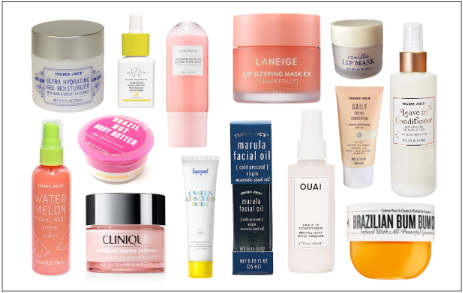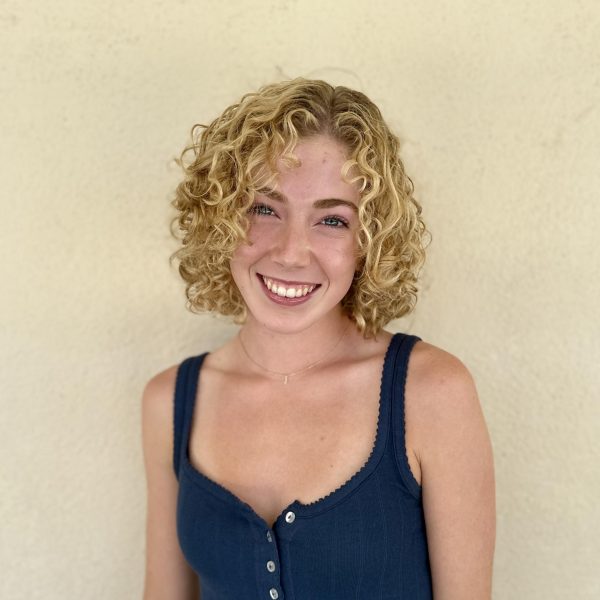As Jessica Arcangel (‘25) checks out her basket at Sephora, the total price flashes across the pin pad’s screen. $85.95. Reluctantly, she swipes her card.
“I feel like sometimes [Sephora products are] super overpriced,” Arcangel said. “But, even though [the products are] worth it in some cases, it’s also like, [are Sephora products] really that much [better than drugstore products]?”
With concealer prices averaging at $30, Sephora boasts aesthetically pleasing, on-trend products, not cheap ones. The company’s popularity online and among young women makes it a hot spot for shopping sprees. While Sephora sells some of its own products, it is first and foremost a reseller for popular beauty brands like Rare Beauty by Selena Gomez, Glossier, and Charlotte Tilbury. These “viral” brands are extremely popular in online communities. Beauty influencers on TikTok and Instagram frequently post videos featuring Sephora brands. It’s rare to see an influencer use drugstore products in their filmed and edited beauty routines.
Considering the viewers who watch these beauty videos are similar to the ones shopping at Sephora—women and girls ages 15-30—it’s probable that beauty influencers have an indirect power over the brands that make it to Sephora’s shelves. Sephora, as a company, is picky about what they sell. Brands must meet ingredient regulations and be easily marketable. Viral products are easy to market because of their traction, and they usually find a way into the store’s aisles.
But, Sephora isn’t the only store that sells makeup. Most drugstores carry cheaper makeup brands like CoverGirl and E.l.f. Although these brands’ products are generally less expensive than those sold in Sephora, their online presence is generally less “trendy.”
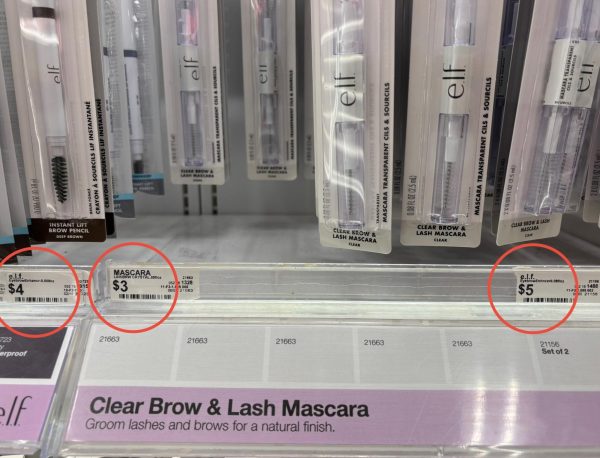
“One of my favorite [drugstore products] is probably the E.l.f. setting spray,” Kate Lodge (‘25) said. “I have tried other setting sprays. I’ve tried the Urban Decay [setting spray], and I’ve tried the Charlotte Tilbury [setting spray]. I’ve found that the E.l.f one works just the same.”
Although Sephora products have a larger price tag, many makeup-wearers still budget for these expensive products.
“For [the Charlotte Tilbury setting powder], I’ve tried cheaper options, and I feel like they don’t work as well,” Arcangel said. “I budget literally $50 for that one, but it’s worth it because I use it every day.”
Many people are willing to invest in expensive products if they’ve found them effective. But, teenagers shouldn’t have to spend $50 for good quality makeup.
“When you see your favorite influencers or the pretty influencers buying specific stuff, it makes you want to buy it, so you can look like them,” Lodge said. “Because, oftentimes, their makeup does look really, really good.”
Unrealistic beauty standards are highly prevalent online. Filters and expensive makeup products contribute to these standards and can be harmful to teenagers’ self-esteem and bank account balances.
The solution to the increasing pressure to buy high-end products and achieve these unrealistic beauty standards could actually lie in one of its causes: influencers. If influencers stop using filters and start incorporating cheaper products into their videos, viewers may feel less inclined to purchase unreasonably priced products.
But, influencers shouldn’t carry all the responsibility—the problem really lies in consumerism. Sure, Sephora’s brand thrives off of marketing tactics. From their iconic, eye-catching, black and white striped bags to their extensive Loyalty Program, customers are consistently enticed to shop at Sephora. However, the maximalist mentality facilitating consumerism is the true culprit behind the increasing pressure to buy trendy (and expensive) products. Until we as a society let go of this mentality, we will continue to feel the heavy pressure to keep buying beauty.

